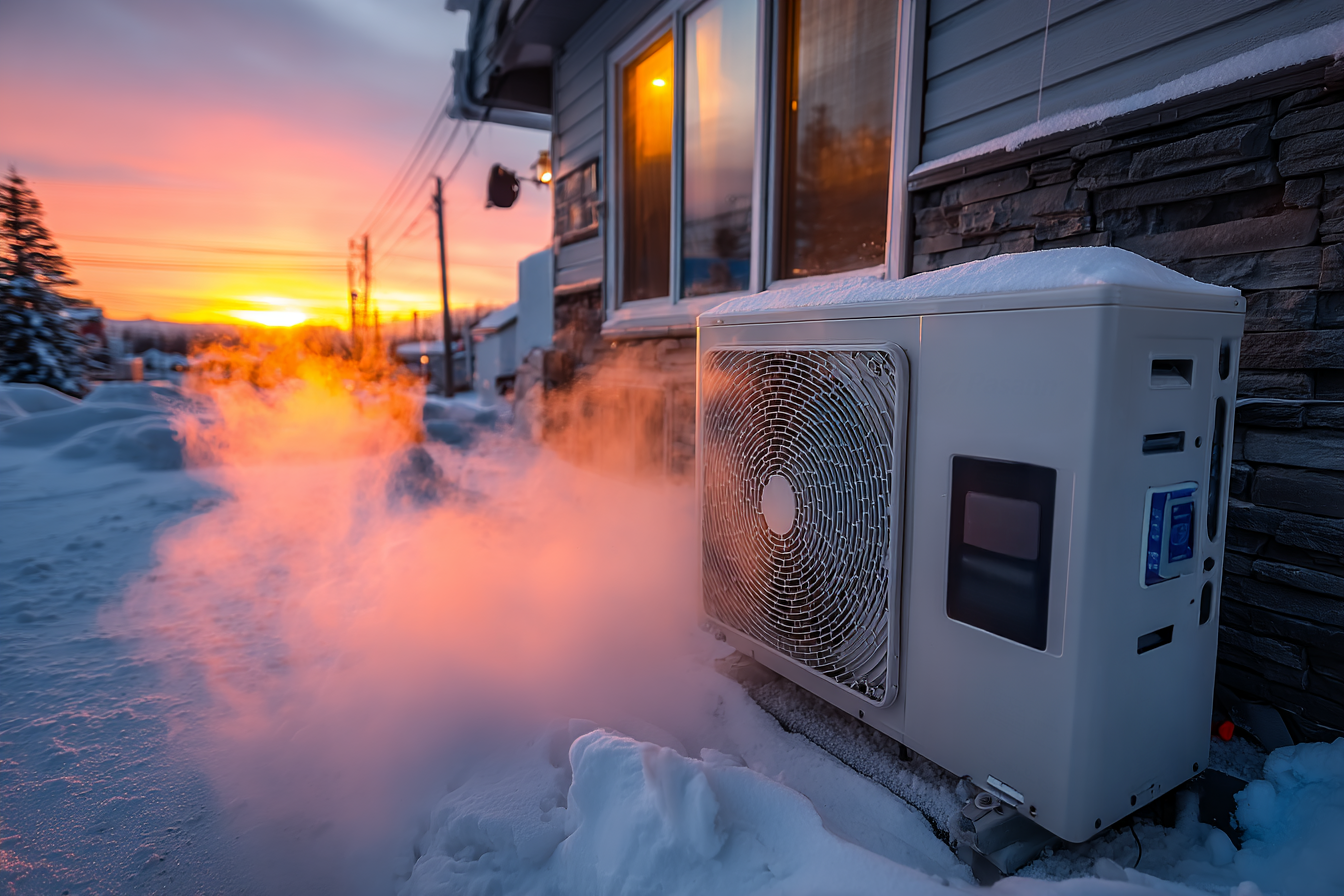Do Heat Pumps Work in Canadian Winters? Results from the Cold Climate Challenge

Written by Solenery
2 min read
Introduction
If you’ve ever wondered whether a heat pump can handle a Canadian winter, you’re not alone. In places like Sudbury, Winnipeg, or Calgary, homeowners often hear that “heat pumps don’t work below –20 °C.” But that myth is quickly melting away—thanks to real-world research from Natural Resources Canada (NRCan).
In this post, we’ll walk you through the results of NRCan’s Cold Climate Heat Pump Challenge, what it means for your home heating, and which models proved they can thrive in serious sub-zero conditions. You’ll also learn how to take advantage of rebates and avoid the trial-and-error approach—because in Canada, winter waits for no one.
What Is a Cold Climate Heat Pump—and Why Is It Different?
A cold climate air-source heat pump (CCHP) is engineered specifically to operate efficiently in temperatures as low as –25 °C or even –30 °C.
Key features include:
- Enhanced compressors that maintain output at low ambient temps
- Variable-speed fans and inverters for better efficiency control
- Cold-weather refrigerants that don’t break down under extreme pressure
- Integrated backup or hybrid systems for peace of mind
These units aren’t your average HVAC systems—they’re designed for places like Thunder Bay and Whitehorse.
What Did NRCan’s Cold Climate Challenge Prove?
In 2022–2024, NRCan ran the Cold Climate Heat Pump Challenge in partnership with utilities and manufacturers across North America. The goal? Push heat pumps to their limit in real Canadian winters.
Highlights from the Challenge
| Test Location | Outdoor Temp | Performance Metric (COP) | Result |
|---|---|---|---|
| Ottawa, ON | –26 °C | 2.7 | Maintained 95% heating capacity |
| Regina, SK | –25 °C | 2.5 | Consistent heating delivery |
| Sudbury, ON | –28 °C | 2.8 | Reliable all-night performance |
Top-performing models included:
- Mitsubishi Zuba
- Carrier Infinity Cold Climate
- Nordic Air-to-Water HP
The Verdict:
CCHPs are no longer “iffy” below freezing—they’ve proven they can heat full homes even during a polar vortex.
Where Are Cold Climate Heat Pumps Working in Canada Today?
Real homes across Canada are already ditching fossil fuels—even in snowy towns.
Case Examples
| Location | Result |
|---|---|
| Kelowna, BC | FortisBC pilot homes with cold climate units saw winter heating bills drop by 30–45%. |
| Halifax, NS | Nova Scotia Power’s program showed cold climate ductless systems replaced oil heating entirely. |
| Thunder Bay, ON | Hybrid heat pump installations paired with smart thermostats reduced natural gas use by over 60%. |
Tip:
You don’t have to figure out your system from scratch. Use tools like Solenery Insights to find rebate-qualified models and performance projections based on your climate zone.
How Do You Know If a Heat Pump Will Work in Your Area?
Ask yourself these questions:
- Do winter temps in my area dip below –25 °C regularly?
- Am I currently using electric baseboards, oil, or propane?
- Do I want to reduce heating bills and qualify for rebates?
If yes to any of these, a cold climate heat pump could be a smart fit.
Regional Viability
| Region | Typical Winter Low | CCHP Viable? | Rebate Available? |
|---|---|---|---|
| Toronto, ON | –15 °C | Yes | Yes (Enbridge HER+) |
| Edmonton, AB | –27 °C | Yes | Yes (CEIP + Calgary Solar) |
| Charlottetown, PEI | –20 °C | Yes | Yes (PEI Energy Rebate) |
| Whitehorse, YT | –30 °C | Hybrid Only | Yes (Good Energy Program) |
Pro Tip:
Some heat pump models are hybrid-ready, meaning they can kick in electric resistance or gas heat only when needed—making them ideal for harsher zones like northern Alberta or Yukon.
What Rebates Make Switching More Affordable?
Government programs make it much easier to adopt cold-climate heat pumps today.
Top Rebates (Mid‑2025)
- Canada Greener Homes Loan – $40,000 interest-free
- Oil to Heat Pump Affordability (OHPA) – Up to $10,000 for oil-switchers
- CleanBC – $10,500–$16,000 depending on income
- Enbridge HER+ (ON) – Up to $10,000
- PEI Home Heating Program – Free or subsidized heat pumps for low-income
These can stack with municipal programs or utility offers. But eligibility varies—so don’t guess.
Conclusion
Thanks to Canada’s Cold Climate Challenge, we now know heat pumps can handle serious winter weather. With the right model and proper installation, they’re not just a low-carbon option—they’re a reliable one.